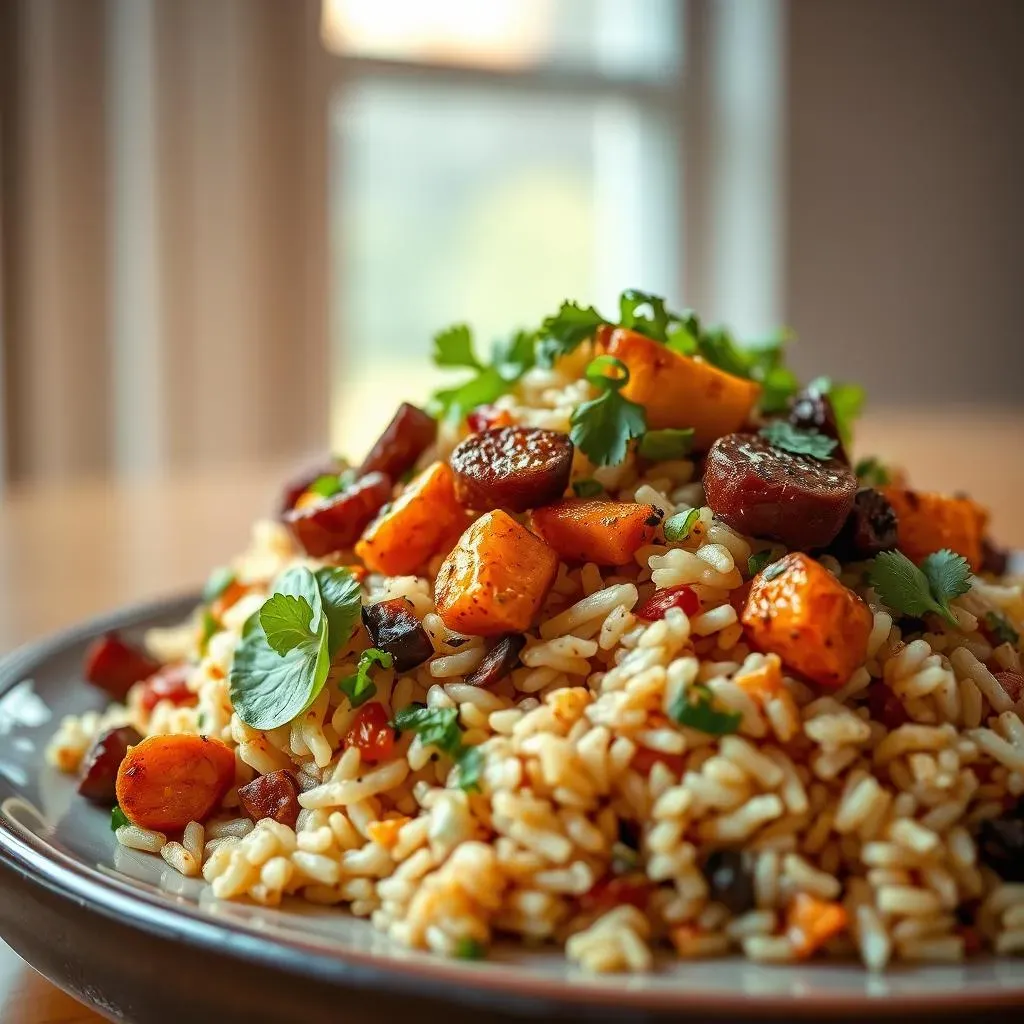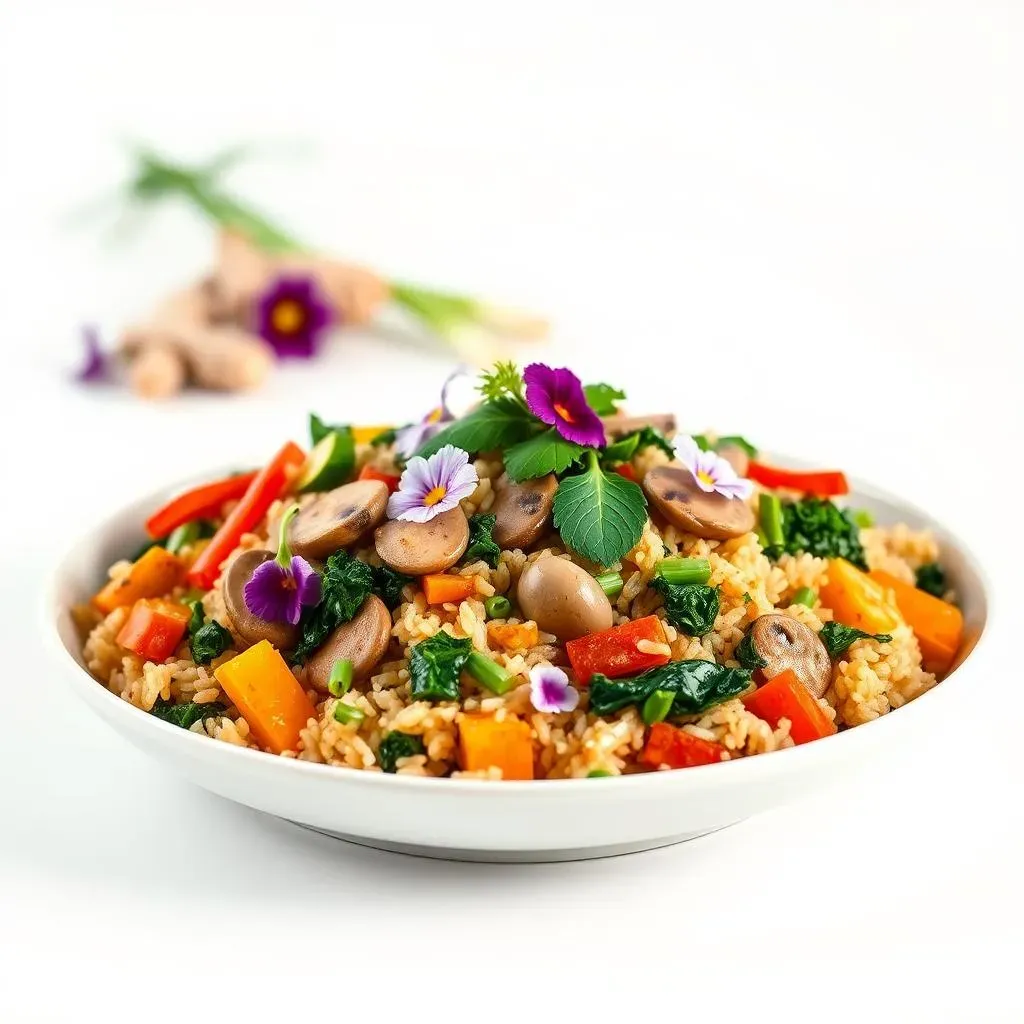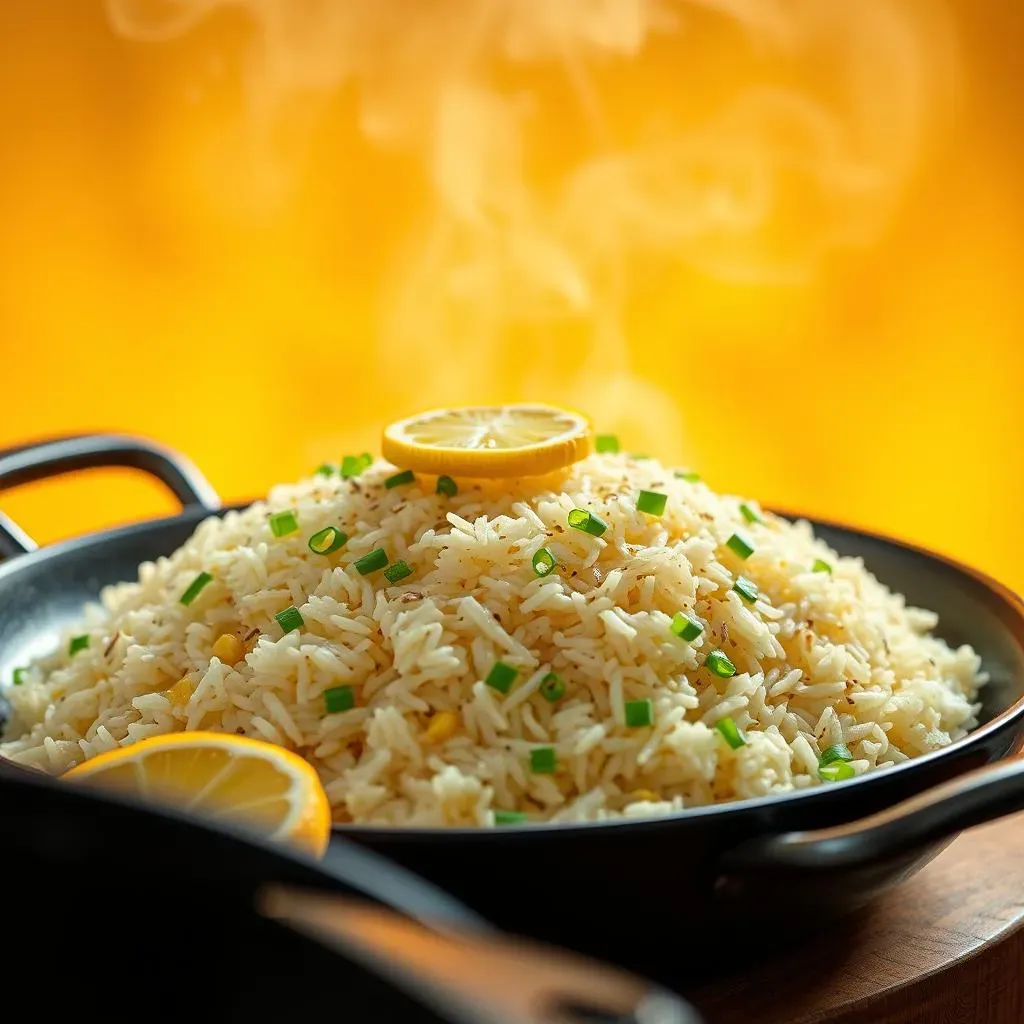Table of Contents
Let's be honest, fried rice is a staple, a comfort food, and a blank canvas for culinary adventures. But are you tired of the same old takeout version? We've all been there, wondering "what is the best contemporary dish for fried rice?" Well, buckle up, because we're about to revolutionize your rice game. This isn't just about throwing some veggies and soy sauce into a pan. We are going on a journey, from simple tweaks to bold international flavors, and even explore healthier, veggie-packed options. You'll discover how to turn your kitchen into a fried rice haven, mastering techniques that'll make your dishes taste like they came straight from a fancy restaurant. So, grab your wok – or your skillet, whatever you've got – and let's get cooking! We'll cover exciting twists on the classics, how to explore global flavors, and how to make healthier versions without sacrificing flavor. Get ready to become a fried rice master.
Beyond the Basics: Modern Twists on Classic Fried Rice

Beyond the Basics: Modern Twists on Classic Fried Rice
Elevating the Everyday
Okay, so you've mastered the basic fried rice, that's awesome. But, let's be real, sometimes basic just doesn't cut it. It's time to ditch the boring and embrace some modern twists. I'm talking about adding things you wouldn't normally consider, like roasted vegetables. Think about it: sweet potatoes, Brussels sprouts, or even some charred broccoli can bring a whole new dimension to your fried rice. It’s not just about throwing them in; you want to roast them first to bring out their natural sweetness and add a bit of smoky flavor. Trust me, it's a game changer.
Another easy way to elevate your fried rice is by switching up the protein. Sure, the usual shrimp or chicken is fine, but have you ever tried crispy tofu or even some chorizo? The key is texture. You want something that will contrast with the soft rice, adding some excitement to each bite. Don't be afraid to experiment with different types of proteins and cooking methods. Maybe try some crispy fried shallots on top. It’s all about layering flavors and textures to make your fried rice more interesting.
Ingredient | Why It Works |
|---|---|
Roasted Sweet Potatoes | Adds sweetness and a soft texture. |
Crispy Tofu | Provides a satisfying crunch and plant-based protein. |
Chorizo | Adds a spicy, smoky flavor. |
Sauce Sensations and Finishing Touches
Now, let’s talk sauces. Soy sauce is great, but it's not the only player in the game. Consider experimenting with different flavor profiles. A drizzle of sriracha mayo can add a creamy, spicy kick, or a touch of black bean sauce can bring a rich, savory element. The sauce is your chance to really customize your fried rice. It’s like the final brushstroke on a painting, it completes the dish. Don't be shy, try different things and see what you like.
And finally, don't forget the finishing touches. A sprinkle of sesame seeds, a handful of fresh herbs like cilantro or basil, or even a fried egg on top can make all the difference. The key is to think about the visual appeal of your dish as well as the taste. You eat with your eyes first, after all. These little additions can transform your fried rice from something basic to something truly special. It's the details that often make the biggest impact.
- Sriracha Mayo: Creamy and spicy.
- Black Bean Sauce: Rich and savory.
- Fresh Herbs: Adds freshness and aroma.
- Fried Egg: Adds richness and protein.
Global Flavors: Exploring International Fried Rice Dishes

Global Flavors: Exploring International Fried Rice Dishes
Alright, so we've messed around with the basics, but let's get real, fried rice is a global phenomenon! It's not just a Chinese thing, you know? So many countries have their own spin on it, and it's time we explored them. Ever heard of Nasi Goreng? It’s an Indonesian fried rice that’s sweet, savory, and a little bit spicy, all at the same time. It uses kecap manis, which is this sweet soy sauce that gives it that distinct flavor, and it’s often served with a fried egg on top. It's like a party in your mouth, I swear.
Then there's Thai fried rice, Khao Pad, which is another explosion of flavor. It’s usually got fish sauce, lime juice, and chili, which gives it a tangy and spicy kick. You can throw in whatever protein and veggies you like, but the real star is the balance of flavors, it's like a perfectly choreographed dance of sweet, sour, and spicy. And let's not forget about Korean kimchi fried rice, Kimchi Bokkeumbap! The fermented kimchi adds a funky, sour, and spicy punch that is just out of this world. It’s often topped with a fried egg and some seaweed, and it’s the perfect comfort food, if you ask me. So, ditch the takeout menu and let’s travel the world through our rice bowls!
Dish | Key Flavors | Typical Add-ins |
|---|---|---|
Nasi Goreng | Sweet, Savory, Spicy | Kecap Manis, Fried Egg |
Khao Pad | Tangy, Spicy | Fish Sauce, Lime, Chili |
Kimchi Bokkeumbap | Funky, Sour, Spicy | Kimchi, Fried Egg, Seaweed |
Healthy & Creative: VeggiePacked and Alternative Fried Rice

Healthy & Creative: VeggiePacked and Alternative Fried Rice
Veggie Powerhouse
Okay, so you're trying to eat a bit healthier, but you still want that delicious fried rice, right? No problem! Let's load it up with veggies. I'm not just talking about a few peas and carrots. Think big! Bell peppers, zucchini, mushrooms, spinach – the more the merrier! The key is to chop them up into small pieces so that they cook evenly and blend well with the rice. You want a rainbow of colors and a variety of textures. It’s like creating a garden in your wok, and it tastes as good as it looks.
And it’s not just about the usual suspects. Have you ever tried adding shredded kale or some roasted butternut squash? These additions can bring a whole new level of flavor and nutrition to your fried rice. Don’t be afraid to experiment with different types of veggies and preparations. The goal is to make your fried rice as healthy and delicious as possible, and trust me, it’s totally doable. This way, you can enjoy your fried rice without feeling too guilty, it's a win-win situation.
Veggie | Why It's Great |
|---|---|
Bell Peppers | Adds color and a slightly sweet taste. |
Spinach | Boosts nutrition and wilts down nicely. |
Butternut Squash | Adds sweetness and a creamy texture when roasted. |
Alternative Grains and Plant-Based Proteins
Now, let's talk about changing things up even more. Rice is great, but have you ever considered using quinoa or cauliflower rice instead? Quinoa adds a nutty flavor and a bit more protein, while cauliflower rice is a great low-carb option. It's like giving your fried rice a complete makeover. You can use them on their own or mix them with rice for a different texture. Don't be afraid to play around and see what you prefer.
And while we are at it, let’s talk about protein. You don’t always have to use meat, you know? Tofu, tempeh, and edamame are all great plant-based options that add protein and texture. Tofu can be crispy if you fry it, tempeh has a nutty flavor, and edamame adds a nice pop of green and some bite. Experimenting with these options can make your fried rice more interesting and healthier. It's all about finding what works for you and having fun in the kitchen. Who said healthy can't be delicious?
- Quinoa: Nutty flavor and extra protein.
- Cauliflower Rice: Low-carb alternative.
- Tofu: Crispy and protein-packed.
- Edamame: Adds a pop of color and protein.
Flavorful and Healthy Sauces
Finally, let's think about sauces. Instead of relying on just soy sauce, try using some healthier options. A little bit of sesame oil, ginger, and garlic can add a ton of flavor without any extra sodium. You can also make a sauce with some rice vinegar and a touch of honey for a sweet and tangy kick. The trick is to focus on fresh ingredients and natural flavors. You want your sauce to compliment all the other healthy ingredients you are using.
Also, don't underestimate the power of herbs and spices. A dash of turmeric can add a nice color and some anti-inflammatory properties, while some fresh cilantro or parsley can brighten up the whole dish. It’s all about layering flavors and adding those little details that make your fried rice taste amazing. So, go ahead, experiment, and make your fried rice as healthy and flavorful as possible. It’s your kitchen, your rules, and your delicious, healthy fried rice!
Level Up Your Fried Rice: Tips and Tricks for RestaurantQuality Results

Level Up Your Fried Rice: Tips and Tricks for RestaurantQuality Results
Alright, you've got the basics down, you're experimenting with flavors, that's all great, but let's talk about taking your fried rice from "pretty good" to "wow, did you order takeout?". The secret, my friend, lies in the technique. First things first: use cold, day-old rice. Seriously, this is non-negotiable. Freshly cooked rice is too moist and will end up clumping together, giving you a mushy mess instead of those beautiful, separate grains you see in restaurants. Day-old rice is drier and will fry up perfectly. It's like magic, but it's actually just science.
Next, you need a screaming hot wok or large skillet. I mean, like, really hot. That high heat is what creates that "wok hei" flavor – that slightly smoky, charred taste that's characteristic of authentic fried rice. Don't overcrowd the pan! Cook your ingredients in batches. If you throw everything in at once, the temperature will drop, and you'll end up steaming your ingredients instead of frying them. And don't be shy with the oil, you need it to get the rice nice and crispy. It's like building a bonfire, you need the right conditions for it to work.
Tip | Why It Matters |
|---|---|
Use Cold, Day-Old Rice | Prevents mushiness and ensures separate grains. |
High Heat | Creates "wok hei" and a smoky flavor. |
Cook in Batches | Maintains high temperature for proper frying. |
Now, let’s talk about the art of layering flavors. Don’t just dump everything in at once. Start with your aromatics – garlic, ginger, onions, whatever you like. Let them sizzle in the oil until they’re fragrant, building the foundation of your dish. Then, add your proteins, cook them until they're just done. Next, toss in your veggies, giving them a quick sauté, then finally, add the rice. Push the rice to one side, add your sauce to the empty space, and let it sizzle for a bit. This way, the sauce gets a nice, intense flavor before mixing with the rice. It’s like composing a symphony, each element playing its part to create a masterpiece.
And finally, remember that cooking is like music. You need to build up the flavors slowly and deliberately. Taste as you go, and don't be afraid to adjust. Too salty? Add a touch of sweetness. Not enough depth? A splash of fish sauce might do the trick. You are the artist, so have fun with it, experiment, and make it your own. It's not just about following a recipe; it's about understanding the process and creating something that you enjoy. And most importantly, don't be afraid to mess up, that's how you learn.
- Start with Aromatics: Build flavor from the base.
- Layer Ingredients: Cook in stages for best results.
- Sizzle the Sauce: Intensifies the flavor.
- Taste as You Go: Adjust seasonings to your liking.